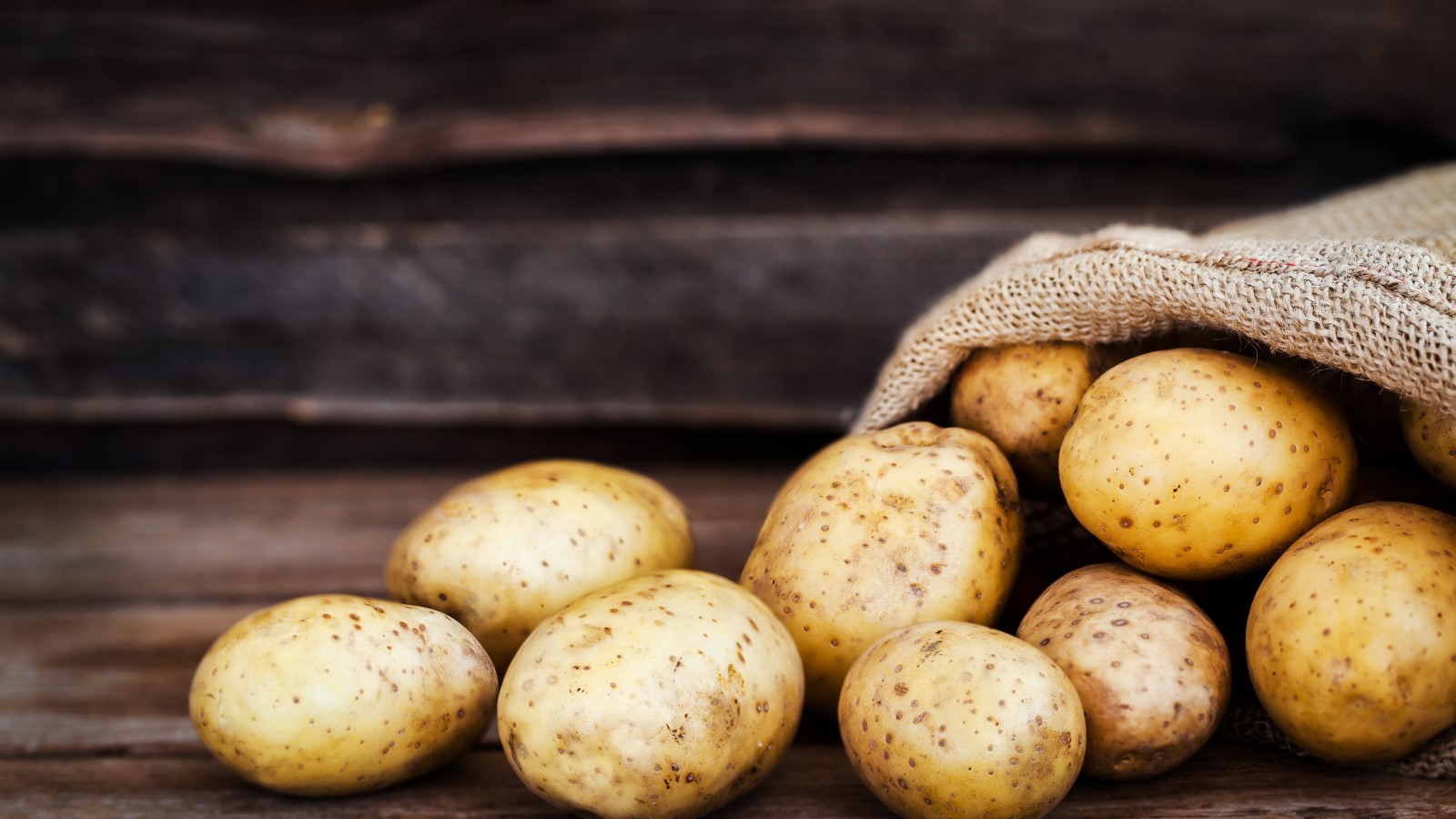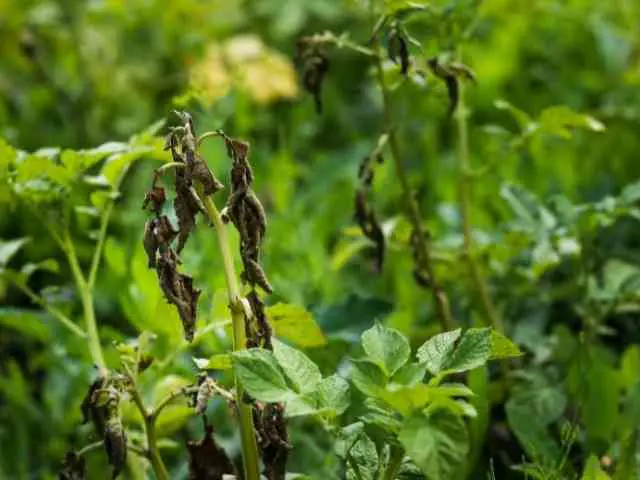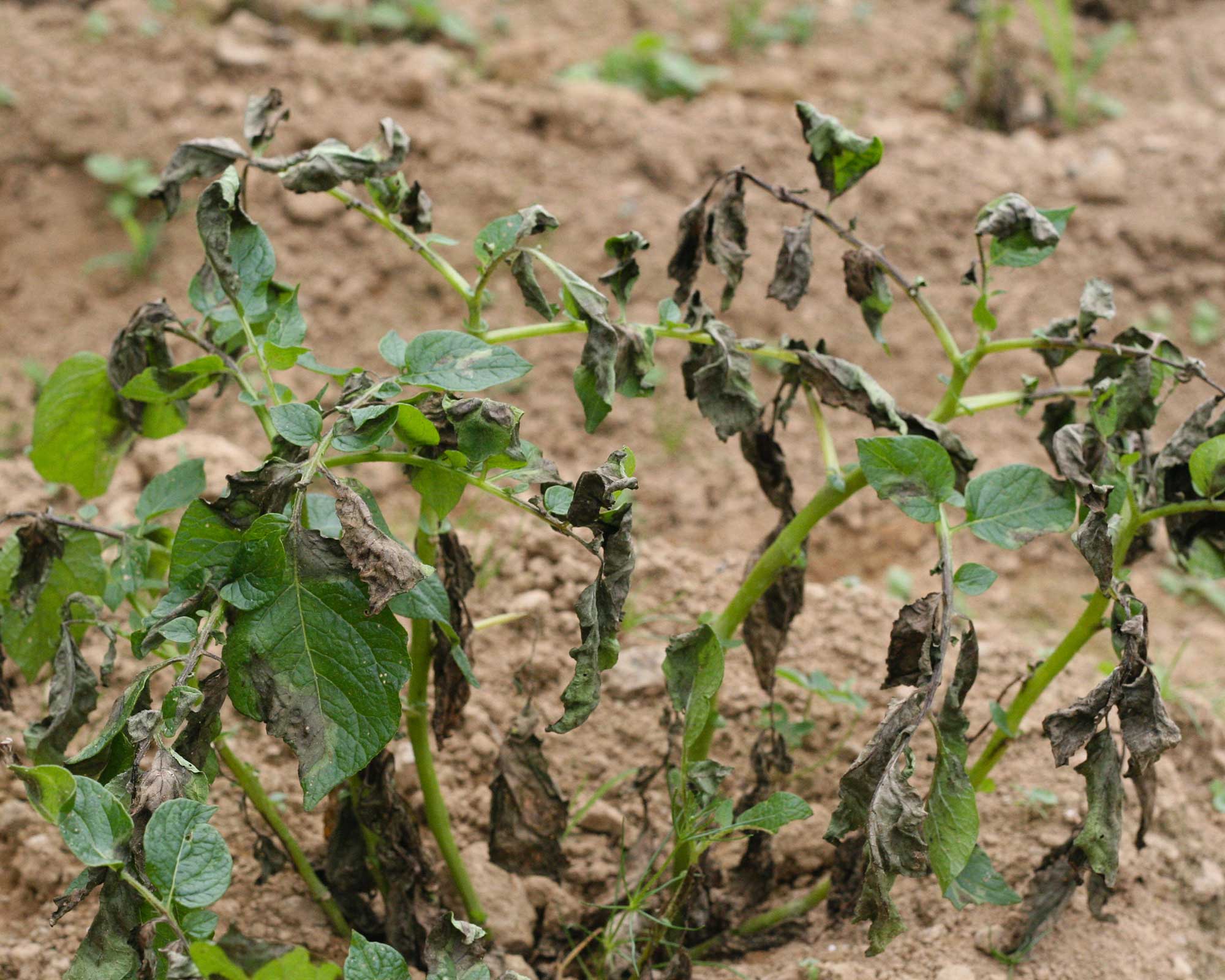Understanding the Threat of Potato Blight
Potato blight is a devastating disease that affects potato crops worldwide, causing significant economic losses and threatening food security. The disease is caused by a fungal-like organism that infects the leaves and tubers of potato plants, leading to a range of symptoms including yellowing or browning of leaves, black spots, and white powdery growth. To effectively manage potato blight, it is essential to understand the threat it poses and the importance of early detection and diagnosis.
One of the most significant challenges in managing potato blight is its ability to spread quickly and quietly, often going unnoticed until it is too late. The disease can be spread through wind, water, and human contact, making it a significant threat to potato crops. In addition, the symptoms of potato blight can be similar to those of other diseases, making it difficult to diagnose accurately.
Despite these challenges, there are steps that can be taken to prevent and control potato blight. By understanding the causes and symptoms of the disease, farmers and gardeners can take proactive measures to protect their crops. This includes using resistant varieties, practicing good sanitation and hygiene, and monitoring crops regularly for signs of disease.
In order to effectively manage potato blight, it is also essential to understand what the disease looks like. By recognizing the symptoms of potato blight, farmers and gardeners can take swift action to prevent the spread of the disease and protect their crops. So, what does potato blight look like? The answer to this question is crucial in the fight against this devastating disease.
By understanding the threat of potato blight and taking proactive measures to prevent and control it, farmers and gardeners can help to protect their crops and ensure a healthy and productive harvest. In the following sections, we will explore the symptoms of potato blight in more detail, including how to recognize the early signs of the disease and what to look for when inspecting potato plants.
Recognizing the Early Signs of Potato Blight
The early signs of potato blight can be subtle, but recognizing them is crucial for effective management of the disease. One of the first symptoms of potato blight is a yellowing or browning of the leaves, often accompanied by black spots or patches. These spots can be small and circular, or larger and more irregular in shape.
As the disease progresses, the leaves may become distorted or curled, and the stems may develop a white powdery growth. This growth is actually a mass of fungal spores, which can be spread by wind or water to infect other plants.
Infected tubers may also develop symptoms, including a soft, mushy texture and a foul odor. In severe cases, the tubers may become completely rotten and unmarketable.
It’s essential to recognize these early signs of potato blight, as prompt action can help prevent the spread of the disease. But what does potato blight look like in its early stages? The answer to this question can be found in the images and illustrations below.
 Figure 1: Yellowing leaves with black spots, a common early symptom of potato blight.
Figure 1: Yellowing leaves with black spots, a common early symptom of potato blight.
 Figure 2: White powdery growth on stems, a sign of fungal spore production.
Figure 2: White powdery growth on stems, a sign of fungal spore production.
By recognizing these early signs of potato blight, farmers and gardeners can take swift action to prevent the spread of the disease and protect their crops. In the next section, we’ll explore how to inspect potato plants for signs of blight.
How to Inspect Your Potato Plants for Blight
Inspecting your potato plants for blight is a crucial step in managing the disease. Regular inspections can help you detect the early signs of blight, allowing you to take prompt action to prevent the spread of the disease. But how do you inspect your potato plants for blight? Here’s a step-by-step guide:
Step 1: Choose the right time to inspect. The best time to inspect your potato plants for blight is during the late morning or early afternoon, when the plants are at their most active. Avoid inspecting during periods of high wind or rain, as this can make it difficult to detect the signs of blight.
Step 2: Look for the early signs of blight. Check your potato plants for the early signs of blight, including yellowing or browning of leaves, black spots, and white powdery growth. Use a magnifying glass or microscope to get a closer look at the plants.
Step 3: Inspect the leaves and stems. Inspect the leaves and stems of your potato plants for signs of blight. Check for black spots, white powdery growth, and any other unusual symptoms.
Step 4: Check the tubers. Inspect the tubers of your potato plants for signs of blight. Check for soft, mushy texture and a foul odor.
Step 5: Use diagnostic tools. Use diagnostic tools like magnifying glasses or microscopes to get a closer look at the plants. These tools can help you detect the early signs of blight and confirm the diagnosis.
By following these steps, you can effectively inspect your potato plants for blight and take prompt action to prevent the spread of the disease. But what does potato blight look like in its early stages? The answer to this question can be found in the images and illustrations below.
 Figure 3: Inspecting potato plants for blight using a magnifying glass.
Figure 3: Inspecting potato plants for blight using a magnifying glass.
Remember, early detection is key to managing potato blight. By inspecting your potato plants regularly and taking prompt action to prevent the spread of the disease, you can help protect your crops and ensure a healthy and productive harvest.
The Different Types of Potato Blight: Late Blight vs. Early Blight
Potato blight is a complex disease that can manifest in different forms, making it essential to understand the distinct types of blight and their characteristics. The two main types of potato blight are late blight (Phytophthora infestans) and early blight (Alternaria solani). While both types of blight can cause significant damage to potato crops, they have distinct symptoms, causes, and management strategies.
Late blight (Phytophthora infestans) is the most severe form of potato blight, causing widespread damage to potato crops worldwide. It is characterized by the appearance of dark green or purple lesions on the leaves and stems of infected plants, which can quickly spread to the tubers. Late blight is typically caused by the fungus Phytophthora infestans, which thrives in cool, moist environments.
Early blight (Alternaria solani), on the other hand, is a less severe form of potato blight that typically affects the leaves and stems of infected plants. It is characterized by the appearance of small, dark spots or patches on the leaves, which can eventually spread to the stems and tubers. Early blight is typically caused by the fungus Alternaria solani, which thrives in warm, dry environments.
Understanding the differences between late blight and early blight is crucial for effective management of the disease. Late blight requires more aggressive management strategies, including the use of fungicides and resistant varieties, while early blight can often be managed through cultural practices such as crop rotation and sanitation.
But what does potato blight look like in its different forms? The answer to this question can be found in the images and illustrations below.
 Figure 4: Late blight lesions on potato leaves, characterized by dark green or purple lesions.
Figure 4: Late blight lesions on potato leaves, characterized by dark green or purple lesions.
 Figure 5: Early blight spots on potato leaves, characterized by small, dark spots or patches.
Figure 5: Early blight spots on potato leaves, characterized by small, dark spots or patches.
By understanding the distinct types of potato blight and their characteristics, farmers and gardeners can take targeted approaches to managing the disease and protecting their crops.
What Does Potato Blight Look Like? A Visual Guide
Potato blight can manifest in different forms, making it essential to understand the visual symptoms of the disease. In this section, we will provide a detailed, illustrated guide to the visual symptoms of potato blight, including images of infected leaves, stems, and tubers.
 Figure 6: Infected potato leaves with yellowing and black spots, a common symptom of potato blight.
Figure 6: Infected potato leaves with yellowing and black spots, a common symptom of potato blight.
 Figure 7: Infected potato stems with white powdery growth, a sign of fungal infection.
Figure 7: Infected potato stems with white powdery growth, a sign of fungal infection.
 Figure 8: Infected potato tubers with soft, mushy texture, a sign of advanced infection.
Figure 8: Infected potato tubers with soft, mushy texture, a sign of advanced infection.
As you can see from the images above, potato blight can cause a range of visual symptoms, from yellowing and black spots on the leaves to white powdery growth on the stems and soft, mushy texture on the tubers. By recognizing these visual symptoms, farmers and gardeners can take prompt action to prevent the spread of the disease and protect their crops.
But what does potato blight look like in its early stages? The answer to this question can be found in the images and illustrations below.
 Figure 9: Early stages of potato blight on leaves, characterized by small, dark spots or patches.
Figure 9: Early stages of potato blight on leaves, characterized by small, dark spots or patches.
 Figure 10: Early stages of potato blight on stems, characterized by small, white powdery growth.
Figure 10: Early stages of potato blight on stems, characterized by small, white powdery growth.
By understanding the visual symptoms of potato blight, farmers and gardeners can take targeted approaches to managing the disease and protecting their crops.
Common Mistakes to Avoid When Identifying Potato Blight
Identifying potato blight can be a challenging task, especially for those who are new to potato farming or gardening. However, it is essential to avoid common mistakes that can lead to misdiagnosis and ineffective management of the disease. In this section, we will discuss common errors people make when trying to identify potato blight and offer tips on how to avoid these mistakes.
One of the most common mistakes people make when trying to identify potato blight is confusing it with other diseases or pests. For example, potato blight can be mistaken for potato scab, a bacterial disease that causes similar symptoms. To avoid this mistake, it is essential to carefully examine the symptoms and look for distinctive features of potato blight, such as the presence of white powdery growth on the stems and leaves.
Another common mistake is failing to inspect the plants thoroughly. Potato blight can cause symptoms on the leaves, stems, and tubers, so it is essential to inspect all parts of the plant carefully. Use a magnifying glass or microscope to get a closer look at the plants and check for any signs of infection.
Additionally, people often mistake potato blight for nutrient deficiencies or environmental stress. However, potato blight is a fungal disease that requires specific conditions to develop, such as high humidity and cool temperatures. To avoid this mistake, it is essential to understand the environmental conditions that favor the development of potato blight and to inspect the plants regularly for signs of infection.
By avoiding these common mistakes, farmers and gardeners can ensure accurate diagnosis and effective management of potato blight. Remember, what does potato blight look like? The answer to this question can be found in the images and illustrations provided earlier in this article.
By understanding the common mistakes to avoid when identifying potato blight, farmers and gardeners can take targeted approaches to managing the disease and protecting their crops. In the next section, we will discuss the various methods for preventing and controlling potato blight, including crop rotation, sanitation, fungicides, and resistant varieties.
Managing Potato Blight: Prevention and Control Strategies
Preventing and controlling potato blight requires a multi-faceted approach that involves a combination of cultural, chemical, and biological methods. In this section, we will outline various methods for managing potato blight, including crop rotation, sanitation, fungicides, and resistant varieties.
Crop rotation is an effective method for preventing potato blight. By rotating potato crops with other crops that are not susceptible to blight, farmers can reduce the risk of infection. Additionally, crop rotation can help to break the disease cycle and reduce the amount of inoculum in the soil.
Sanitation is also an important aspect of managing potato blight. Farmers should remove and destroy any infected plants or debris to prevent the spread of the disease. Additionally, farmers should disinfect any equipment or tools that come into contact with infected plants to prevent the spread of the disease.
Fungicides are another effective method for controlling potato blight. There are several types of fungicides available, including copper-based fungicides, chlorothalonil, and azoxystrobin. However, fungicides should be used judiciously and in combination with other methods to prevent the development of resistance.
Resistant varieties are also an effective method for managing potato blight. There are several resistant varieties available, including varieties that are resistant to late blight and early blight. However, resistant varieties should be used in combination with other methods to prevent the development of resistance.
Biological control methods, such as the use of beneficial microorganisms, are also being developed to manage potato blight. These methods involve the use of microorganisms that are antagonistic to the blight pathogen, and can help to reduce the risk of infection.
By using a combination of these methods, farmers and gardeners can effectively manage potato blight and reduce the risk of infection. Remember, what does potato blight look like? The answer to this question can be found in the images and illustrations provided earlier in this article.
By understanding the various methods for managing potato blight, farmers and gardeners can take targeted approaches to preventing and controlling the disease. In the next section, we will discuss the importance of monitoring and reporting potato blight outbreaks.
Monitoring and Reporting Potato Blight Outbreaks
Effective monitoring and reporting of potato blight outbreaks are crucial for preventing the spread of the disease and minimizing its impact on potato crops. Farmers, gardeners, and researchers play a vital role in tracking and managing blight outbreaks, and their efforts can help protect the global potato supply.
Monitoring for potato blight involves regular inspections of potato plants for signs of infection, such as yellowing or browning leaves, black spots, and white powdery growth. What does potato blight look like? It can manifest in different ways, depending on the type of blight and the stage of infection. Late blight, for example, can cause large, irregular lesions on leaves and stems, while early blight can produce smaller, more circular spots.
When monitoring for potato blight, it’s essential to inspect plants regularly, ideally every 7-10 days, and to use diagnostic tools like magnifying glasses or microscopes to confirm the presence of the disease. Farmers and gardeners should also keep records of their inspections, including notes on weather conditions, soil moisture, and any management practices used to control the disease.
Reporting potato blight outbreaks is critical for alerting other growers and researchers to the presence of the disease in a particular area. This information can help prevent the spread of blight and inform management decisions, such as the use of fungicides or resistant varieties. In many countries, reporting potato blight outbreaks is mandatory, and farmers and gardeners are required to notify their local agricultural authorities if they suspect an outbreak.
Researchers also play a crucial role in monitoring and reporting potato blight outbreaks. They can provide valuable insights into the epidemiology of the disease, including its spread, severity, and impact on potato yields. By analyzing data from monitoring and reporting efforts, researchers can identify trends and patterns that can inform management strategies and improve disease control.
In addition to monitoring and reporting, farmers and gardeners can take steps to prevent the spread of potato blight, such as practicing good sanitation, using crop rotation, and implementing integrated pest management (IPM) strategies. By working together, we can reduce the impact of potato blight and protect the global potato supply.



%205606706.jpg)





